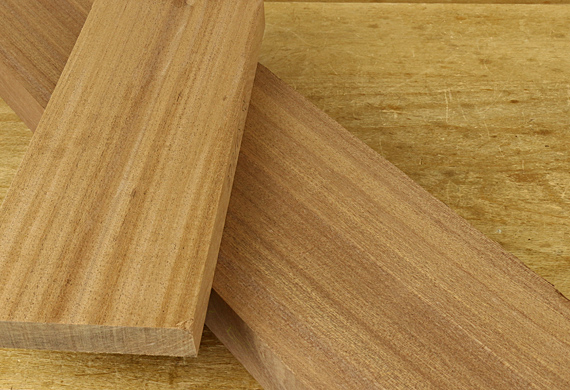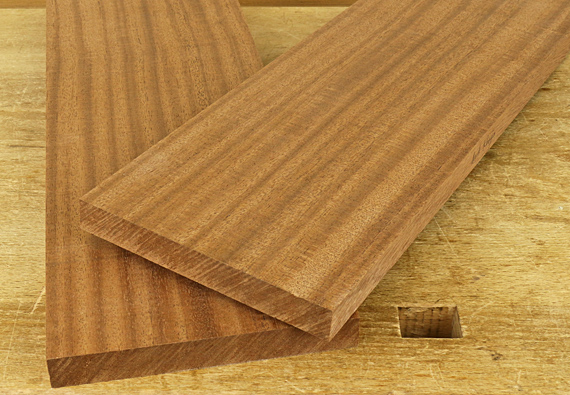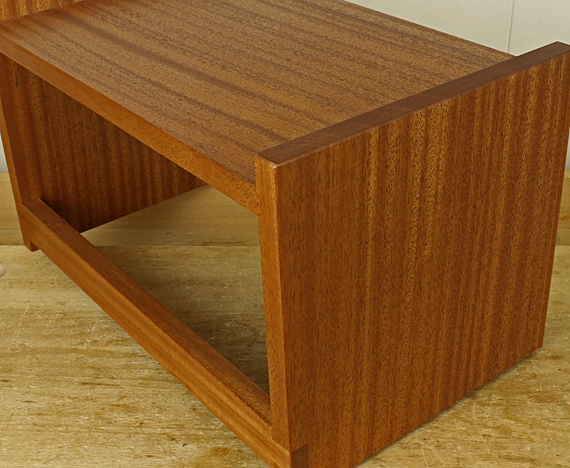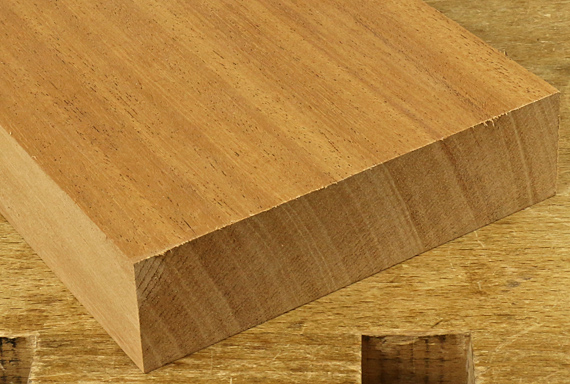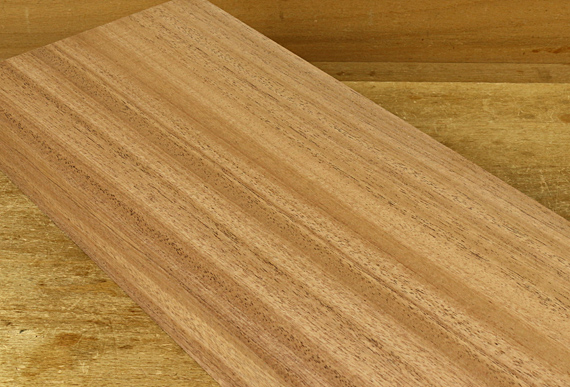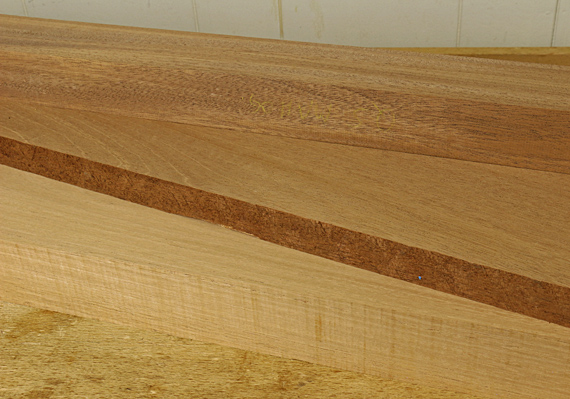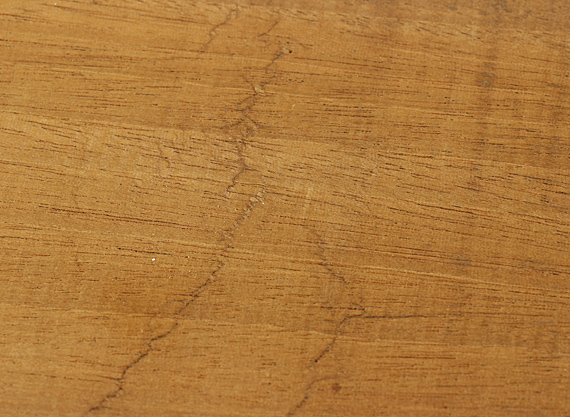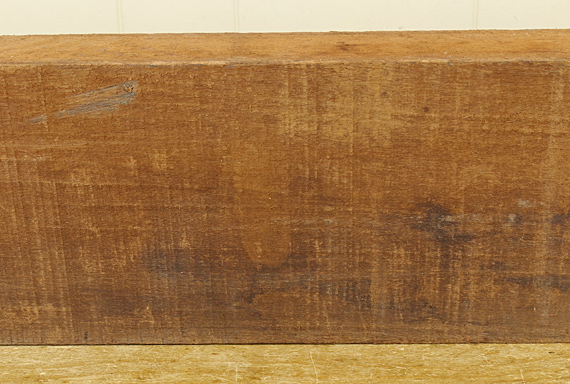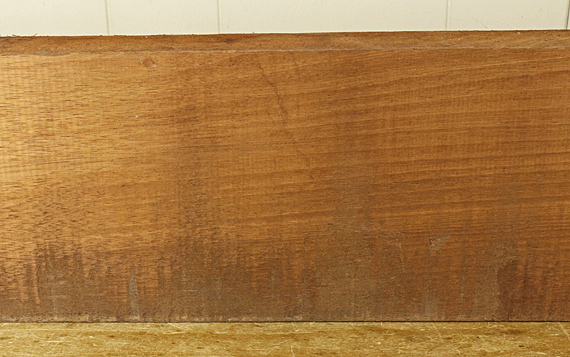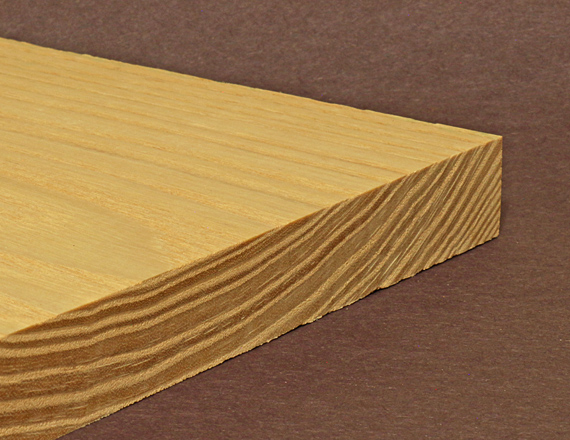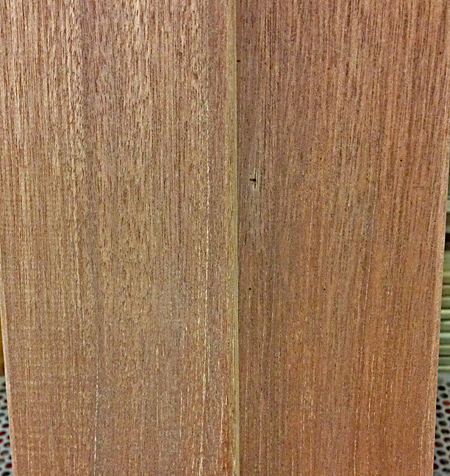
Dark red meranti, pictured above, is a generally uninspiring reddish brown, rather uniform looking wood that does not therefore find its way much into fine woodworking. If you have not come across it as solid wood, you likely have seen it as the skin of middling quality plywood, where it is referred to as lauan or Philippine mahogany. It is about the same density as khaya and genuine mahogany, but a bit softer. It has several cousins in the Shorea genus, including the softer and even more forgettable light red meranti. Any claim of these woods as “mahogany” is untenable.
There is, however, one more wood that does have a strong claim as a mahogany substitute: utile, also known as sipo. Entandrophragma utile is in the same genus but not as hard as sapele, and easier to work. It is a generally consistent but not boring wood that can look quite nice, especially flatsawn, where you otherwise might have used genuine mahogany. Its darker ray lines sometimes also add interest. I’ve also seen some wild ribbon striped quartersawn utile.
The volumetric shrinkage of utile is 11.8%. That’s pretty good but no match for genuine mahogany’s freakish 7.5%. Still, with a nice T/R of 1.4%, you can expect utile to behave quite well.
Unfortunately, dear readers, I do not have any utile in my shop at this time, so I cannot offer you a photo. However, this is a good time to refer you to the magnificent resources created by Eric Meier. His huge website is a treasure trove of well-organized information, including beautiful and useful photos. As good as the website is, I highly recommend also buying his book, Wood!, which I think is the best book on wood available, and one of the best books in the entire woodworking field. [As always, my recommendation is unsolicited and uncompensated.]
If you are contemplating using any of the woods discussed in this series of posts – “genuine” mahogany (Swietenia macrophylla), African mahogany/khaya (Khaya spp.), sapele (Entandrophragma cylindricum), or utile/sipo (Entandrophragma utile), I offer these suggestions:
- Consider each on its own merits rather than trying to imitate some other wood, namely “genuine” mahogany.
- Pay close attention to the particulars of each board, including color, density, figure, and, of course, the orientation of cut from the log. There is much variation within each species.
- Watch out for defects, especially compression failures. For this reason, and the point above, consider buying these woods planed or at least hit-or-miss planed if you can.
- Scraping is a good way to tame the interlocked grain on quartered surfaces.
Enjoy building!
